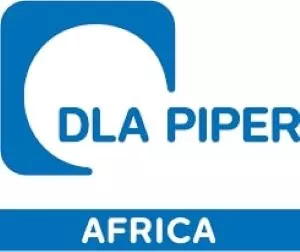1. |
INTRODUCTION |
|
1.1. |
The Electricity Act, 2023 (the "Act") was signed into law on the 8th day of June 2023 by the President of the Federal Republic of Nigeria. |
|
1.2. |
The Act, among other things, repealed and replaced the Electricity and Power Sector Reform Act, 2005 and seeks to provide a comprehensive legal and institutional framework for the power sector in Nigeria in the areas of electricity generation, transmission, system operation, distribution, supply, trading and to stimulate the contribution of renewable energy to Nigeria's energy mix. It is expected that this will create an enabling environment to attract investment in the Nigerian Electricity Supply Industry (NESI). |
|
1.3. |
This work sets out the key provisions, changes, and implications of the Act on the power sector in Nigeria. |
2. |
KEY PROVISIONS AND CHANGES IN THE ACT |
|
2.1. |
Repeal of the Electric Power Sector Reform Act
2005. |
|
2.2. |
Transition into Medium Term and Long-Term Stages of
the Nigerian Electricity Market |
|
2.3. |
State Generation and Distribution of
Electricity |
|
2.4. |
The provisions of the Act permit State Legislatures to develop policies and frameworks in respect to the generation, transmission, and distribution of electricity within its State, empowers, but does not obligate the States to make their own laws on the supply of electric power. Hence, to the extent that a State does not make any new law nor take any positive steps, the Federal regime will continue to apply with respect to those States. |
|
2.5. |
As such, until a State establishes its own electricity market laws, NERC will continue to regulate electricity business exclusively within that State. Currently, Lagos, Edo, and Kaduna States have already enacted electricity market laws and may commence regulation of their markets. However, in states without such laws, NERC will continue to regulate. |
|
2.6. |
National Integrated Electricity Policy and Strategic
Implementation Plan |
|
2.7. |
The Act does not provide guidance on how to resolve conflicts between the State's policies and NIEPSIP. |
|
2.8. |
Role of Nigerian Electricity Bulk Trading Plc
(NBET) |
|
2.9. |
However, in line with provisions of the Act in relation to the transition of the Nigerian electricity market to the Medium Term and Long-Term Electricity Market stages from its current transitional stage, NERC is authorised to issue directive and within such period as it may specify, direct NBET to cease to enter into contracts for the purpose of resale of electricity and ancillary services and to novate its existing contractual rights and obligations to other new trading licensees as specified in the Act6. |
|
2.10. |
Establishment of the National Hydroelectric Power
Producing Areas Development
Commission |
|
2.11. |
Additionally, the Act provides that ten percent (10%) of the total revenue generated by any company or authority from the operations of any hydroelectric dams shall be paid to the fund maintained by N-HYPPADEC.7 As such, the concession fees and royalties payable by concessionaires of hydro plants in Nigeria may include additional fees to cover for the contribution required to be paid to the N-HYPPADEC fund. |
|
2.12. |
Tariffs and Subsidies |
|
2.13. |
The Act also provides that any grant of subsidies by Federal or State Governments to any consumer or class of consumers shall be implemented within the Consumer Assistance Fund established pursuant to the Act and under strict implementation and supervision of NERC. This is to facilitate gradual reduction of cross subsidies9 before the declaration of the commencement of a Long-Term Market Stage in line with the Act.10 |
|
2.14. |
Renewable Energy Purchase and Generation
Obligation |
|
2.15. |
Likewise, the Act also provides for renewable purchase obligations on distribution and supply licensee, that is, holders of distribution license or supply license are required to purchase a minimum quantity of their power requirements from renewable energy sources. In addition, a bulk customer permitted by NERC is mandated to purchase a specified percentage of its total electricity needs from renewable energy sources or pay a premium to NERC.12 |
3. |
POTENTIAL IMPLICATIONS OF THE ACT ON THE POWER SECTOR AND ITS STAKEHOLDERS |
|
3.1. |
Multiple Licensing Regime |
|
3.2. |
Operators in the NESI may be required to be licensed at various State levels, including multiple licensing for operators whose activities span more than one (1) State. This may have implication as to costs and timing of approvals (as timelines may not be uniform across States). |
|
3.3. |
However, we also note that the Act now empowers State Governments to make laws with respect to the electricity markets within their respective States and commence regulation of their markets. However, to the extent that States does not make any new law nor take any positive steps to regulate their electricity markets – the Federal regime may continue to apply with respect to those States, until such State laws are established. The Federal regime will also continue to apply to supply of electricity across States lines and cross border with other countries. |
|
3.4. |
Installation of Meters and implications for
Discos |
|
3.5. |
By virtue of the above, customers without meters after the expiration of the date appointed by NERC will not have access to electricity. While we note that the Federal Government has introduced various policies (such as the Meter Asset Provider policy introduced in 2018 and the National Mass Metering Programme introduced by the Central Bank of Nigeria 2020) with the aim of bridging the metering gap by offering a single digit interest loans to Discos and local manufacturers for the procurement and supply of electricity meter, the huge metering gap for end-use customers is still a key challenge in the industry. |
|
3.6. |
Private sector investment in
Transmission Network |
|
3.7. |
Hence, private investors may enter into commercial arrangement or concession of old or new transmission lines. Additionally, private investors may consider a long-term financing of the transmission network. This will help ameliorate the issue of inadequate funding and dilapidated infrastructures which have impacted the transmission network over time. |
|
3.8. |
Competition |
|
3.9. |
The Act also provides that the Federal or State Government may enter into a public-private partnership arrangement with private companies for investment in the transmission network in accordance with the provisions of the Act and relevant framework on infrastructure concessions and public-private partnerships.14 |
|
3.10. |
This is expected to increase participation of investors and create a healthy competition especially as it relates to generation, transmission and distribution of electricity within the State. Such enhanced competition may afford flexibility in terms of choice and the ability of customers or consumers to elect or choose providers that will better serve their electricity needs. |
|
3.11. |
Collaboration |
|
3.12. |
Furthermore, with the amendment introduced by the 5th Alteration Act and the Act, companies licensed to operate in areas covered by the national grid can effectively collaborate with companies operating on an off-grid basis thereby harmonising operation. This collaboration will focus on investments in utilising the existing operational framework between the companies, improving electricity generation, transmission, and distribution output and, potentially, increasing profit. |
|
3.13. |
Franchising arrangements by DisCos in the
NESI |
|
3.14. |
Based on this, participation in the distribution and supply network will increase significantly. As such, holders of a distribution licence may recoup investment and generate additional revenue by entering into a franchising arrangement or other commercial arrangement with third parties within their licenced area. |
|
3.15. |
However, the Act also provides that NERC for the purpose of approving a request for electricity distribution franchising at any time during any of the market stages recognized under the Act and the Market Rules, is to take into cognizance, the aggregate tenure of licenses held by successor distribution companies, any disaggregation of the distribution licenses into distribution and supply licenses and such distribution franchising framework as may be put in place by NERC.16 |
|
3.16. |
Possible Encroachment on Distribution Franchise
Areas |
4. |
CONCLUSION |
|
4.1. |
The Electricity Act, 2023 is a major leap in the right direction with its aims and objectives highly rooted towards the progress of the Power Sector. In terms of investment, the Act makes copious provisions that seeks to promote competitive private sector investment. |
|
4.2. |
The Act represents a major legislative and institutional framework for the reform of the Nigerian Electricity Supply Industry. Additionally, the changes introduced by the Act will provide an enabling environment for investors and companies to participate in the Nigerian energy market and ultimately provide liquidity in the NESI. |
|
4.3. |
As summarised above, the provisions of the Act are laudable as they aim to stimulate policy measures to improve power generation, transmission and distribution capability of the relevant players in the electricity industry, as well as provide the country with modern standards geared towards accelerating power generation through the diversification of the power sector to embrace renewable energy sources, hence accommodating sustainable energy transition. |
Footnotes
1. Section 1 of the Act.
2. Sections 7(1)(2) & 8 of the Act.
3. Section 2(2) of the Act.
4. Section 3 & 4 of the Act.
5. Section 6(f) of the Act.
6. Sections 7(1),(2)(d) & 69(2)(3) of the Act.
7. Section 95(1)(2) of the Act.
8. Section 116(1)(2) of the Act.
9. Section 210 of the Act defines Cross subsidies as the subsidization of the tariffs by one class or group of consumers by another class or group of consumers.
10. Section 117(1)(2) of the Act.
11. Section 80 of the Act.
12. Section 72, 80, 167(2) of the Act.
13. Section 109 (2) of the Act.
14. Section 112 of the Act.
15. Section 68(4) of the Act.
16. Section 68(5) of the Act.
The content of this article is intended to provide a general guide to the subject matter. Specialist advice should be sought about your specific circumstances.






